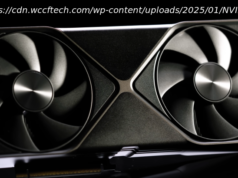The pace of patching is slower than with Anniversary Update, and there have been bugs galore but no show-stopping failures
Microsoft’s getting better at rolling out new versions of Windows 10, with a decrease in the initial patching rate and far fewer show-stopping bugs. But we’ re still a long way from Creators Update stability, and there’s still very little reason to upgrade from the Anniversary Update to the Creators Update manually.
One month ago, Microsoft rolled out Windows 10 Creators Update, version 1703, build 15063.13. Since then there have been two patches: build 15062.138 on April 11 and 15063.250 on April 25. You can expect another patch next Tuesday, May 9, for a total of three cumulative updates in a little over a month.
That patching pace is slower than with the Anniversary Update—four patches in less than a month—and much slower than the eight-patches-in-10-weeks rate established with the Fall Update. By this one measure, at least, the quality of version upgrades is getting better.
We also haven’ t seen any jaw-dropping failures, no crashing on Kindle or broken Skype on webcam debacles. To be sure, there have been bugs galore, including a hauntingly familiar failure of Logitech BRIO cameras and a new report that the Creators Update brings back an old formatting conflict between Internet Explorer and Dynamics CRM 2011. But the quantity and “quality” of new Creators Update bugs aren’ t in the same league as those seen with Anniversary Update.
The pace of the rollout remains shrouded in mystery. Microsoft hasn’ t shared any information about new version penetration, but anecdotal evidence points to a slow rollout. The closest thing we have to actual numbers comes from AdDuplex, which measures the versions of Windows used to accesses sites that contain its monitors. According to Mark Hachman at PCWorld, Anniversary Update was rolled out to about 18 percent of all Windows 10 computers within a month, with 35 percent at two months and 78 percent after three months. AdDuplex reports that as of April 24,9.8 percent of all Windows PCs were running Creators Update.
Part of the reason why the Creators Update rollout is going better than Anniversary Update is that the Creators Update has comparatively few new features. It’s particularly damning when arguably the most important new feature in a version is its ability to easily block updates. Given the roughly four-month lag between Anniversary and Creators Update releases, the lack of key new features shouldn’ t be too surprising.
Two weeks ago, Windows servicing and delivery director John Cable recommended that you not manually install the Creators Update:
It’s important to note that when customers use the Software Download Site to manually install the Creators Update they bypass many of these blocks. Therefore, we continue to recommend (unless you’ re an advanced user who is prepared to work through some issues) that you wait until the Windows 10 Creators Update is automatically offered to you.
I continue to recommend that you go one step further, and proactively block installation of the Creators Update until it’s been anointed with “Current Branch for Business” status.
Yesterday Microsoft director of product marketing Michael Niehaus made clear on a Windows as a service AMA that Win10 versions will appear, and fall out of support, according to an 18-month schedule—no more “60 days after the last version of etc etc” hedging.
It still looks like it will take four months for a new version—“Current Branch”—to reach the point where it’s reliable—“Current Branch for Business”—although I wouldn’ t be too surprised if Microsoft gets good enough at the rollout game to narrow that gap down to three months or less.
(Note that Gregg Keizer at Computerworld anticipates the terminology will change. “Current Branch” may well be replaced by “Semi-Annual Channel (Pilot) ” at some point in the undefined future, and “Current Branch for Business” is in line to change to “Semi-Annual Channel (Broad) .”)
As things currently stand, you and your organization have a 14-month window from the time a new version is declared up to snuff until it’s no longer supported.
With a new version promised every six months, admins will have their work cut out for them.






